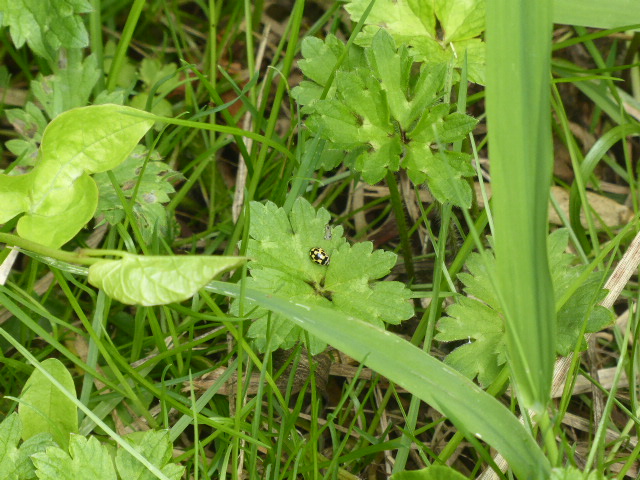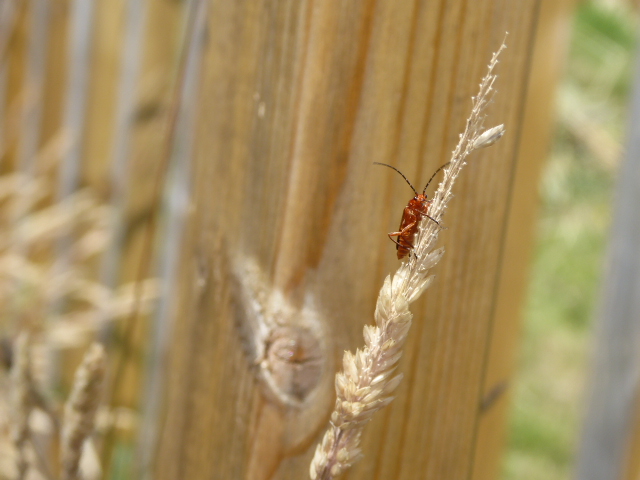After a week of mild but cloudy weather with the odd shower, which has helped revive the garden and saved us from trudging up and down with watering cans, we now have a proper rainy day with stormy wind, so I’m digging into the ‘archive’ of photos I haven’t used yet. These are from when my camera was on the wrong setting last weekend, so not quite as many pixels, but I haven’t seen these two creatures since.
The Common Red Soldier Beetle brought back memories. This is the one we used to call ‘Bloodsucker’ when I was little. We thought it was red because it was full of human blood, obviously! I now learn that it is a common nickname. This beetle can be found on meadow flowers, as it eats pollen, nectar, and aphids. This one is on grass at the top of the bank. That’s probably because the larvae of the beetle feast on slugs and snails which live among meadow grasses. Because of its diet, the Common Red Soldier Beetle is good for the garden as it eats up the garden pests.

I’m always pleased to see a ladybird, but I thought all ladybirds which weren’t red with seven spots were invasive species. However, it turns out that there are forty species native to the UK, including this 14-spot ladybird. This ladybird is the most common yellow-and-black ladybird out of three. It has fourteen rectangular black spots which can merge into a chequered pattern. In this case, I wasn’t even sure which were the spots until I compared pictures. Another of the yellow-and-black ladybirds has twenty-two spots which are round and defined – I would love to see that in the garden!
This ladybird had a long hibernation and didn’t emerge till May. It lives in grasslands and gardens and along with all the other ladybirds, is good for the garden as they keep the aphids under control.
Although the Harlequin ladybirds are invasive, the advice from the RHS is not to attempt to control them, as although they are in competition for food and also have cannibalistic tendencies, they do mainly eat aphids and they are so easily confused with the many native species. Ladybirds / RHS Gardening
